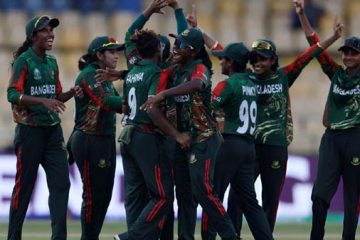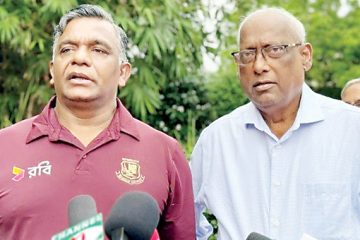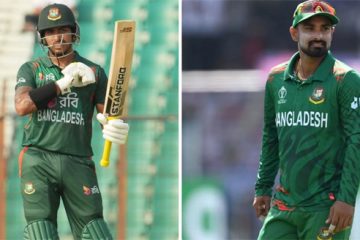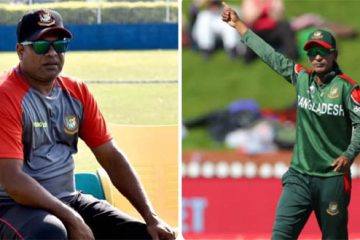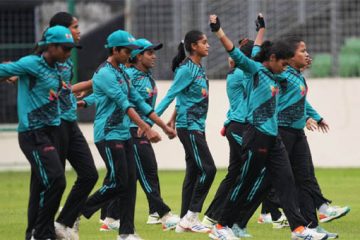Mushfiq’s captaincy under BCB scrutiny
The year 2014 will go down in the history of Bangladesh cricket as one of their worst not just because they have yet to win any Test or one-day international but because how they lost one after another match after creating opportunities for themselves.
It all began with the two Twenty20 Internationals against Sri Lanka, but Bangladesh made a mess mostly in ODIs, a format still regarded as their favourite.
The latest debacle came in Grenada in two back-to-back matches when Bangladesh were in a potentially winning position on both occasions.
Defending a modest total of 217 runs, the bowlers left West Indies reeling at 34-5 before they threw it away in a spectacular fashion.
And then in the next match, the bowlers made some amendments, restricting West Indies to 247-9, something not a very difficult score to knock off in an era of fielding restrictions and powerplay.
Instead, the Tigers were dismissed for 70 – their second lowest total ever total.
One has reason to doubt if they will at all be able to overcome the twin shocks and pull off a win in the remainder of the tour.
If the recent history is anything to go by, there is little hope.
In their very first ODI of the year, the Tigers put Sri Lanka in an embarrassing position of 67-8 only for them to lose the grip on the match due to some poor fielding.
Three catches went down and Thisara Perera took the full benefit to score 80 runs from 57 balls to propel Sri Lanka to 180 all out.
The Tigers could not absorb the shock and lost the game by 13 runs. The defeat haunted them in the remaining two matches as well that resulted in their first winless home series in several years.
And then came the Asia Cup, a tournament which Bangladesh started in a positive manner once again by scoring 279-7 against India in their first match.
A Bangladesh attack, devoid of suspended Sakib al Hasan, was unable to defend the total as India raced to a six-wicket win on the back of a century from Virat Kohli.
The real shock – shame is perhaps the most appropriate word – came in the next match against Afghanistan, who beat the home side by 32 runs.
Bangladesh, opting to bowl first, had Afghanistan reeling at 90-5 before two stunning fifties by Asghar Stanikzai and Samiullah Shenwari took them to 254-6.
It was still a chaseable target, but perhaps distraught by the late onslaught of the Afghans, the Tigers lost both the openers for just one run and were finally dismissed for 222 runs.
The batsmen responded to the criticism in the next game against Pakistan, putting on Bangladesh’s highest ever 326-3 that raised a great hope for a win. Pakistan lost their third wicket for 105 runs in 23 overs and the asking run-rate soared to almost nine.
Bangladesh somehow managed to lose this game too and thankfully saw another opportunity coming in the next game against Sri Lanka despite a batting failure.
The opening pair put 74 runs on the board and yet Bangladesh could post just 204-9. Sri Lanka, in reply, lost three wickets for eight runs including two of their most experienced campaigners – Kumar Sangakkara and Mahela Jayawardene.
But the eventual champions successfully regrouped to snatch the win with skipper Angelo Mathews remaining not out on 74.
The cricket fans in Bangladesh thought the Tigers’ disappointment would be over once India decided to send a second-string side for a three-match series in June.
And Bangladesh, true to the expectation, scored 272-9, something which should have been the winning score in an overcast condition.
India knew some rain was in the offing and the match can be decided in Duckworth/Lewis method, so they decided to go after the bowlers from the very beginning.
They reached 100 runs in 16.1 overs when rain finally began and on resumption they needed just 50 runs in 10 overs for a win.
If the bowlers were at fault for not making a game out of it, they came up with a vicious response, dismissing India for 105 runs – their lowest ever score against Bangladesh.
It took very little time for the fans’ joy to turn into sorrow as Bangladesh folded for 58 runs in response.
The BCB recruited two psychologists, respectively from Canada and Australia, before and after the India series to help the Tigers overcome this losing habit, but the ploy did not work.
In his class Australian psychologist Phil Jauncey asked the Tigers always to stick to plan A in order to remain positive in a match.
But when it was time for them to implement his idea they made a mess.
After reducing West Indies to 34-5 when Bangladesh faced some counterpunch from Kieron Pollard, skipper Mushfiqur Rahim opted for plan A, B, C, D, E and F using six bowlers in the first 20 overs to lose the momentum.
Mushfiq held the batsmen responsible for the latest debacle and with the scoreboard showing a figure like this he had no choice.
But the truth is that was a collective failure as had been the case throughout the year and being the skipper of the side he had some responsibility.
His copybook captaincy that lacked creativity was called into question several times this year though Mushfiq was not ready to accept such criticism.
After the India series he refused to resign simply because he did not want to leave the team in a bad shape.
However, the BCB has already started to think if the shape has become permanent.
Mushfiq has just an ODI, a Twenty20 International and two Tests to change the shape or risk losing his job before the home series against Zimbabwe.
-With New Age input









